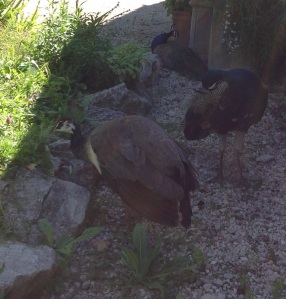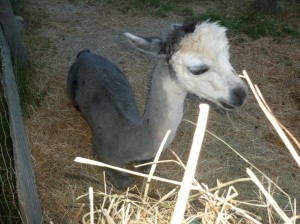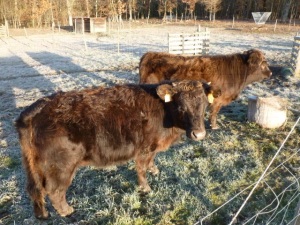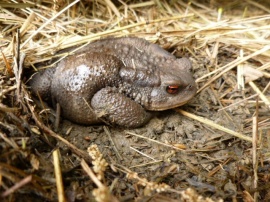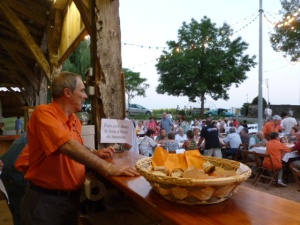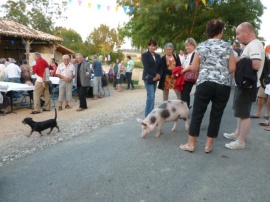Once the alpacas were shorn for the first time in May last year we wondered what we were going to do with the fleeces. A little knitting was the obvious answer even though I’m not a proper ‘knitter’. We were told about a mill in the north of France that could spin the fleeces into yarn and got in contact with them; shortly afterwards photos arrived showing the amount of vegetal matter that was ‘acceptable’ and we realised that the fleeces would have to be ‘weeded’ before they could be dispatched.
During the months that followed, whenever I had a spare moment I would try to work on the fleeces, but I have to say that during the summer there are more interesting things to do. June brought my birthday and Roger said I’d have to wait for my present until we visited my son in the UK in August.
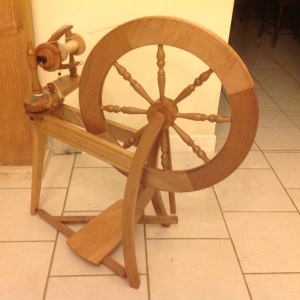
Ashford spinning wheel
Finally we arrived in Yorkshire and my surprise present appeared, one Ashford Spinning wheel, loads of bobbins, accessories, and a couple of pillowcases of washed fleeces…. My son is an estate agent and one of his clients was selling an Alpaca farm, so he kindly persuaded my husband to buy all the spinning equipment as a joke!
And joke it would have remained but for the Internet and a huge amount of good fortune. On returning to France I wondered if by any chance there were any spinning groups in the area. To my enormous surprise I discovered that L’Association des Fileuses et Tisserandes du Sud-Ouest de France (http://www.fibres-so-france.com) was based 13 kms down the road in our local market town, Caussade.
Having made contact by email, I turned up for the September meeting, full of trepidation, clasping my spinning wheel and a bag of wool. The members couldn’t have been more welcoming, and are drawn from wonderful mixtures of nationalities French, English, Dutch, Danish, Swedish, to name but a few… Their interests are enormously varied and include spinning, weaving, knitting, felting, lace making and embroidery; not only are the members of the association enormously talented but also wonderful teachers, encouraging others to learn their skills.
That Monday in September was a revelation, I was taken in hand by Jill, the retiring president of the group who had previously been a craft tutor at an agricultural college. ‘Forget the alpaca, learn on sheep’s wool’ was the first instruction. Thanks to her patience throughout the day and the encouragement of others, I left the meeting being able to spin something; the result – I hesitate to call it a thread – was horribly irregular and would do wonderfully as a plant tie, but it was a start.

My first yarn
The following month I returned bringing the practice bobbins, and received further instruction and encouragement; little by little the yarn has got thinner and slightly more even and I learned how to ply the threads together to make a usable yarn.
Christmas arrived, my present was an Ashford carder that arrived by post from New Zealand just in time to go under the tree – having borrowed the one owned by the association, we had decided that it would be best if I had my own… My daughter received her first homemade Xmas present, a somewhat short scarf made from the neck fleece of our white alpaca, Ash.

From neck to neck – Ash’s fleece made Antonia a very short, but warm, scarf .
The next request came from Roger, “how’s about a jumper, darling”.
“Who’s fleece do you want?” said I.
“Coconut’s” was the reply.

My Christmas present in action carding Coconut’s fleece
As I wasn’t too sure how plying two threads of alpaca would work, and we only had a little of Coconut’s grey baby wool so I decided to spin one thread of alpaca and ply it with one of white wool, made from my original bags of Yorkshire fleece, thus giving a tweedy effect.

Weighing the first batch of wool – the pattern required 550 grams of wool but, as my husband is a big chap, the finished jumper weighed closer to 900 grams.
Five months later, it was done and just in time for the summer! It is somewhat ‘rustic’ but should be warm…

The finished article
